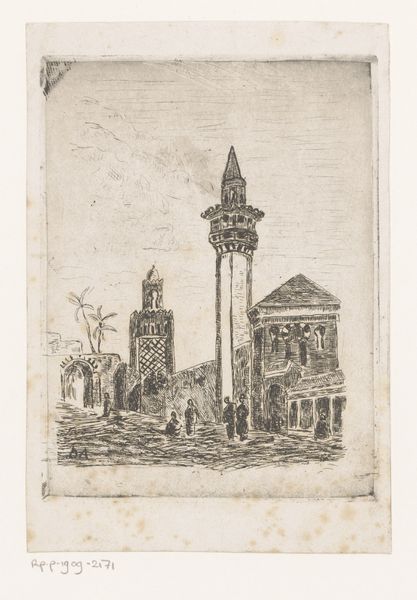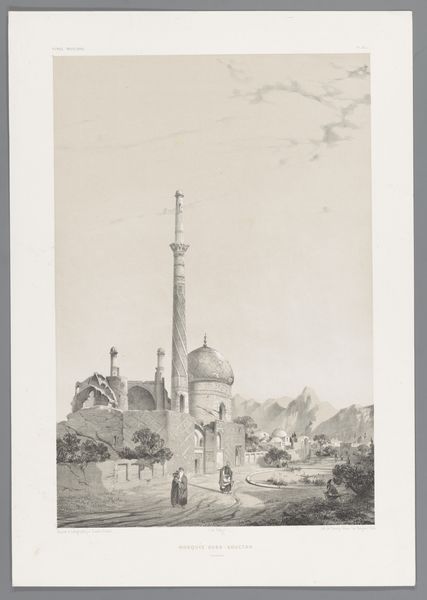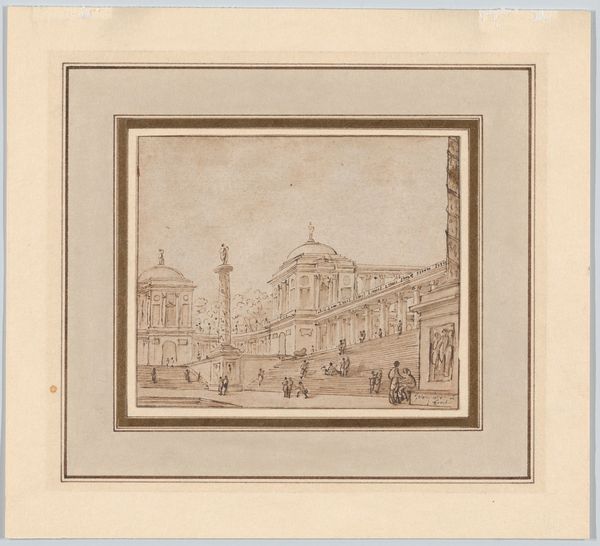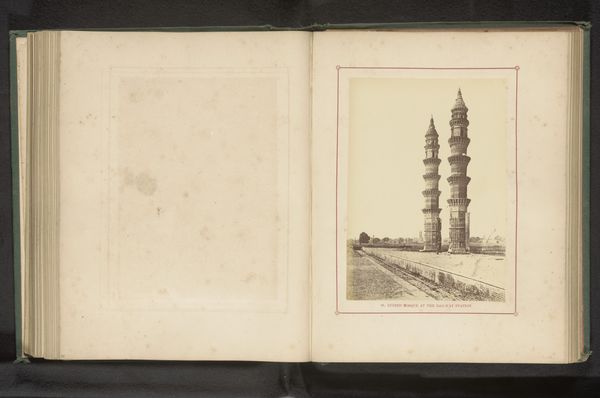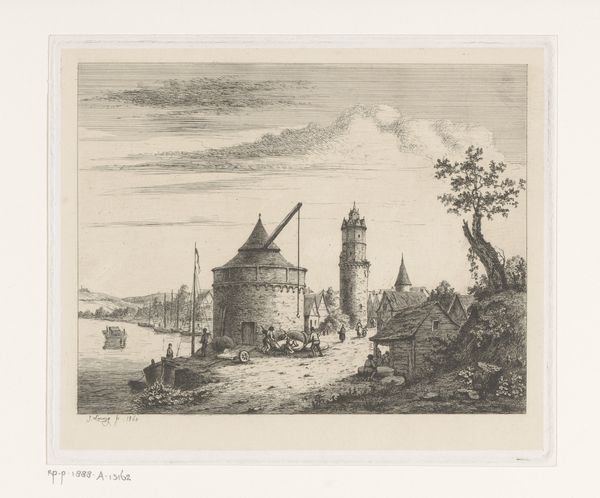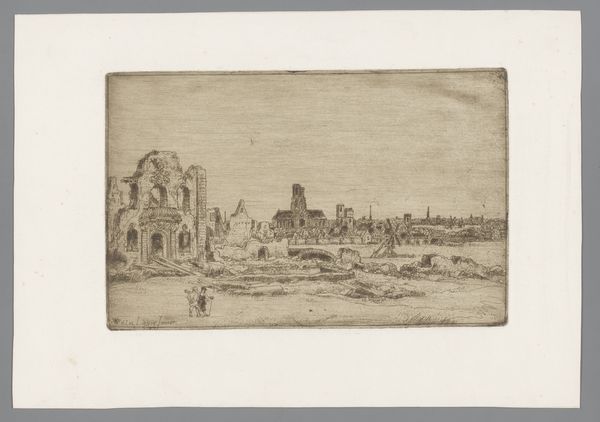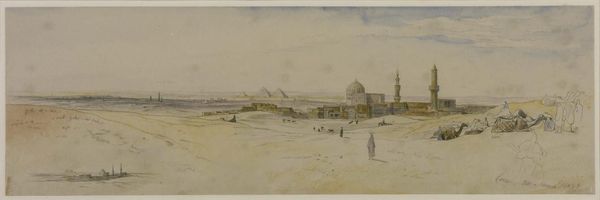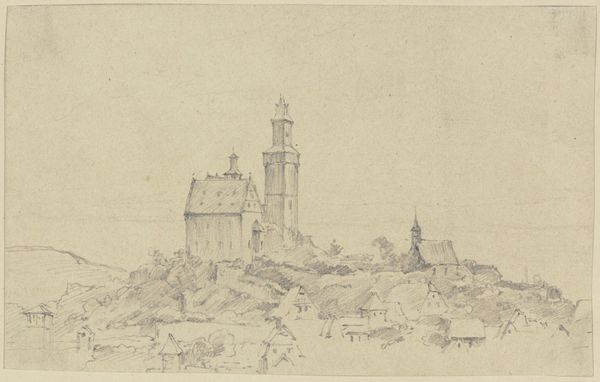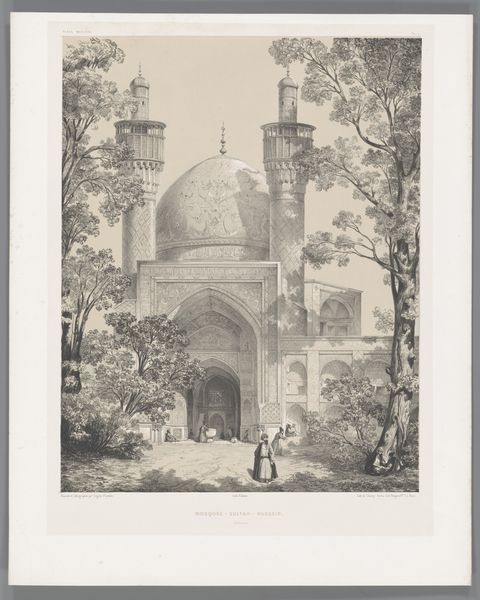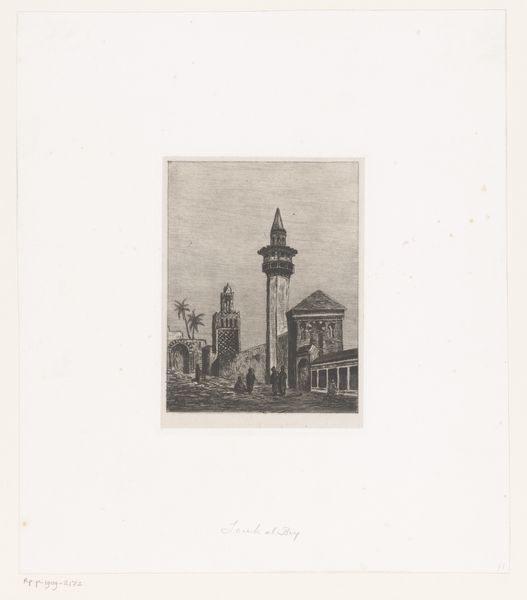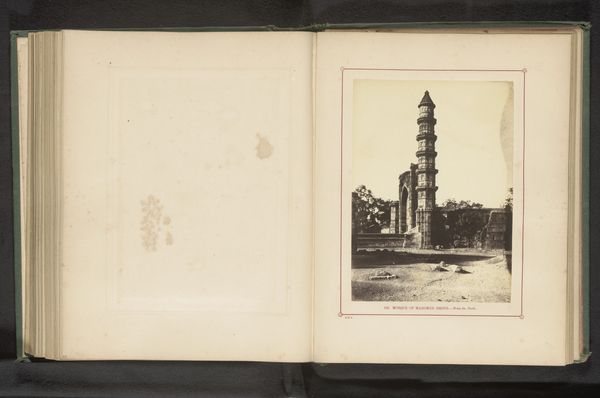
drawing, paper, pencil
#
drawing
#
pencil sketch
#
landscape
#
paper
#
pencil
#
orientalism
#
watercolor
Dimensions: height 102 mm, width 153 mm
Copyright: Rijks Museum: Open Domain
Editor: This pencil drawing, "Grafmoskee bij Caïro," made by Wijnand Otto Jan Nieuwenkamp between 1903 and 1912, gives me a somewhat dreamy, almost melancholic feeling. The scene depicts what I believe is a mosque set within a cityscape. What symbols or deeper meanings can we glean from this piece? Curator: Indeed. Consider the dome. Universally, it represents the heavens, a celestial canopy. In Islamic architecture, it's often a symbolic echo of the Prophet's umbrella, sheltering believers. What emotional weight do you perceive knowing this protective symbolism? Editor: That definitely adds another layer. It transforms the skyline from a mere architectural depiction to a spiritually protective space. Curator: And what about the minaret? Rising like a beacon, the minaret visually bridges the earthly and the divine. How do you feel that impacts the perception of the worshippers depicted at the bottom of the sketch? Editor: The minaret gives me a feeling of aspiration. Like those figures are drawn upwards, toward enlightenment. Curator: Precisely! Consider the limited use of color – tiny figures in blue and red stand out and appear distinct amongst the ochre-tinged scene, inviting contemplation. What do those vibrant spots of color communicate, and how might they echo similar imagery throughout art history? Editor: Maybe they’re intended to show vitality amidst the architectural structures. It's made me appreciate how symbolism is crucial to deciphering an artist's intent and how cultural context truly shapes how we perceive visual art. Curator: It’s a lesson in how visual elements connect to deeper, shared meanings across time.
Comments
No comments
Be the first to comment and join the conversation on the ultimate creative platform.

